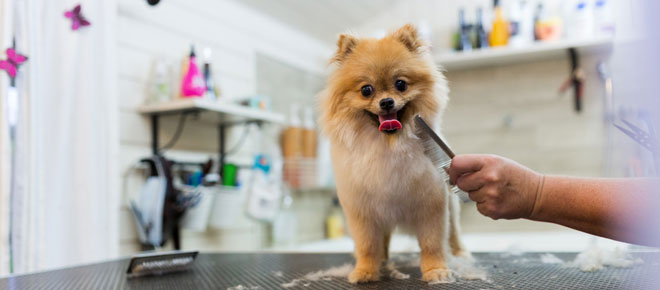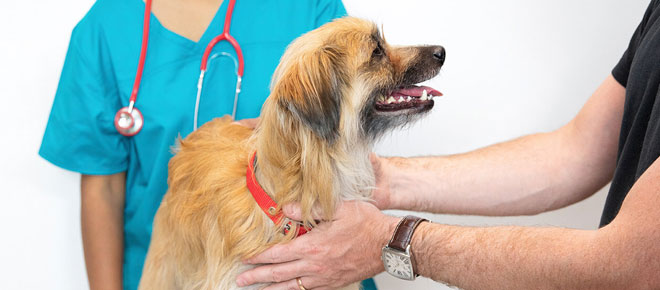5 Tech-Enabled Ways to Keep Your Pet Safe and Secure

From tracking your pet’s activity levels to alerting you when they leave the house, a growing number of tech-enabled devices are keeping pets safe and secure.
Luckily, many of these devices are compatible with smart-home hubs and are easy to install. Here are five of them you may want to consider installing in your home.
GPS Smart Collars
The best GPS smart collars offer a great sense of peace and security by providing accurate information on your pet's whereabouts. Many of them work offline and online, so you can track your pet in any situation.
If your dog is prone to running away from home or wandering around, a GPS smart collar will help you keep tabs on them. It will also help you find them if they ever get lost or injured.
A good GPS smart collar will also track their health and fitness levels. This can help you make sure they are getting enough exercise and keep track of any body language that may indicate health problems like licking or scratching.
Another feature of a GPS smart collar is that it can create a boundary zone for your dog so you can be alerted if they go outside the boundary. If they do, the system will send you an email or message to let you know where they are located and to contact you.
This is especially helpful for dogs with disabilities like a missing leg or a blind eye. If you have a senior or disabled pet, this type of device can be a lifesaver in case they become lost.
Most of these GPS smart collars come with a rechargeable battery that lasts several days. Some of them even last for weeks if you use them on an ongoing basis.
While these devices can be a great investment, there are some downsides to them as well. The biggest one is that they need to have cellular service and GPS technology to work properly.
This will depend on the model you choose and where you live. If you live in a country that doesn't have cellular coverage, these GPS trackers won't work at all.
PETstock is a great place to find affordable pet tech and gadgets, and you can save even more with PETstock Promo Codes. Some popular options include automatic feeders, GPS trackers, and interactive toys. Be sure to check out their website for the latest deals and discounts on pet tech.
Smart Sensors
Smart Sensors are a key component of the Industrial Internet of Things (IIoT). They can be used to monitor your pets and keep them safe, or they can be used to help you control processes in the home.
A smart sensor is a gadget that collects data from the outside world and uses internal computing power to carry out predetermined tasks when certain inputs are detected. As a result, environmental data may be collected more precisely and automatically with fewer errors interfering with the information that is accurately captured.
In the modern technology world, smart sensors are an integral part of the Internet of Things and as components of a wireless sensor and actuator network (WSAN). They incorporate signal conditioning, embedded functions, and digital interfaces that replace basic sensors to enable more accurate measurement and processing, reducing errors and lowering costs.
Integrated smart sensors can be programmed to automatically adjust for various conditions and conditions like speed, temperature, pressure, and the presence of humans. They also filter out the noise and convert the resulting analog signals into calculable electrical signals.
These intelligent sensors are typically small in size and consume low power. They are also faster than conventional sensors and are more accurate than non-integrated sensors.
They are also able to communicate with a local user interface and memory as well as with the main microprocessor/microcontroller of a system. They are a key component in process control and can be used to help maintain optimum productivity, reduce downtime, and increase production efficiency.
Whether you want to keep tabs on your pets or monitor the status of the machines in your factory, smart sensors are an invaluable tool that can help you achieve faster time to market and a lower cost of ownership while also improving asset utilization and managing risks. When used with Allen-Bradley(r) Integrated Smart Sensor Solution and the Logix Programmable Automation Controller, smart sensors can also help you decrease programming time, ease start-up & commissioning and streamline diagnostics.
Home Automation
Home Automation is a technology that allows users to control devices, lights, and appliances in their homes remotely using a smartphone app. It can make life much easier and more convenient, which can be especially helpful for busy homeowners.
It also gives you peace of mind and can help prevent unwanted guests, theft, and burglaries while you are away on vacation or a business trip. It can also help you to save money on energy bills and other expenses by reducing your use of power when no one is in the house.
Smart devices learn how you use your home and can be programmed to automatically change settings to save you energy and money. For example, your thermostat may be set to turn on or off to reduce heating costs when nobody is home.
If you're looking for affordable pet products, using Pets Discount Codes can be a great way to save money. Many pet retailers offer discount codes that you can use to get a percentage off your purchase or even free items. Keep an eye out for sales and promotions as well, as these can also help you save money on pet products.
Similarly, your lighting can be controlled to reduce energy use and keep you comfortable when you are away from home. Depending on your system, it can also be programmed to notify you when something is amiss in your home to give you time to react before something goes wrong.
Finally, smart devices can be programmed to send notifications to your smartphone when someone enters or leaves your home, whether you’re at home or not. This can help to deter criminals from entering your property and can give you a heads-up if something dangerous happens, such as a gas leak or fire.
While there are many benefits of incorporating technology into your home, it is important to remember that securing your home and its devices is still a big concern. That is why it is essential to follow security best practices such as keeping your passwords secure, using WiFi and Ethernet network connections securely, and maintaining firmware updates for smart devices, hubs, and gateways.
Motion Sensors
Motion sensors are a great way to keep track of when people and pets are entering and exiting certain areas of the house. They can be used as standalone devices or as part of a home security system.
The majority of motion sensors detect movement using passive infrared (PIR) technology. This means they detect changes in infrared energy caused by the motion of someone or something, and then activate an alarm when a trigger occurs.
Another type of sensor is a microwave motion sensor, which emits radio waves and reflects them from objects in its range. It then compares the signal reflected from an object with the original signal that was sent, determining whether there is movement in the covered area.
A less common type of sensor is a tomographic motion sensor, which uses a series of nodes that link together, forming a mesh network. This mesh network determines when a person or object moves through the nodes and triggers an alarm.
Other types of sensors include active ultrasonic and vibration motion detectors, which work by emitting ultrasonic sound waves in a frequency above the range of human hearing. These waves bounce off objects in the immediate vicinity, and a transducer inside the sensor detects the return signal.
One good rule of thumb when installing motion sensors in your home is to make sure they're at least 7.5 feet above the ground, which is high enough to avoid false alarms from pets that are scampering around below them. If you can't install the sensor that high, however, consider pointing it up toward the ceiling instead, which is higher than where pets tend to scamper.
Smart Phone Apps
Pet owners often have more specialized security needs than the average homeowner. Animals can trigger false alarms with standard home security components, and even accidentally automate smart home systems if they’re left unattended. Luckily, technology equipped with pet-specific settings can remedy this problem and keep your pets safe and secure.
One of the most common ways to do this is with a smartphone app. These apps are available for free or for a small fee and are a great way to stay in touch with your pet when you’re away.
Some of these apps can also help you keep track of your pet’s health, food, and exercise. They should have a user-friendly interface and allow you to create multiple profiles for more than one pet at the same time. They should also have features such as food monitoring, exercise planning, GPS tracking, and veterinary recommendations.
Another type of app is a pet care app that helps you take care of your dog or cat at home. These apps can be a lifesaver if you’re an owner who works from home or has to leave your pet with someone else while you’re away on a business trip.
You can use these apps to track your pet’s whereabouts at all times and alert you if he goes outside a designated safety zone. Many of these apps also let you designate dangerous zones that alert you if your dog is near busy streets, bodies of water, or other hazards.
Some of these apps can also be used as a virtual fence to keep your pet safe while you’re away. They can also alert you if someone tries to break in, or they can tell you where your pet is in case of a fire or carbon monoxide leak.
Conclusion
When used with Allen-Bradley(r) Integrated Smart Sensor Solution and the Logix Programmable Automation Controller, smart sensors can also help you decrease programming time, ease start-up & commissioning and streamline diagnostics. Home Automation Home Automation is a technology that allows users to control devices, lights, and appliances in their homes remotely using a smartphone app. Motion Sensors Motion sensors are a great way to keep track of when people and pets are entering and exiting certain areas of the house.








